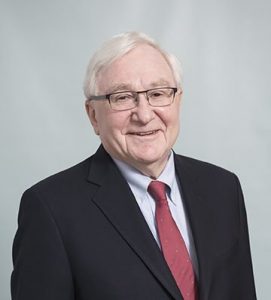
It was during residency training at Parkland Memorial Hospital in Dallas Texas, when I learned that prayer can heal. I had my first patient with terminal cancer in both lungs. I advised him on what therapy was available and what little I thought it would do. Rightly Yes, enough he opted for no treatment.
Yet whenever I stopped by his bedside, he was surrounded by visitors from his church, singing and praying. Good thing, I thought, because soon they will be singing at his funeral.
A year later, when I was working elsewhere, a colleague at Parkland called to ask if I wanted to see my old patient. See him? I couldn’t believe he was still alive. I studied his chest X rays and was stunned. The man’s lungs were completely clear- there was no sign of cancer.
“His therapy has been remarkable,” the radiologist said looking over my shoulder.
Therapy? I thought. There wasn’t any—unless you consider prayer.
I told two of my medical school professors what had happened. Neither was willing to acknowledge that the man’s healing was miraculous. “That was the natural course of the disease,” one said. The other professor shrugged. “We see this,” he said.
I had long ago given up the faith of my childhood. Now I believed in the power of modern medicine. Prayer seemed an arbitrary frill. So, I put the incident out of my mind.
The years passed and I became chief of staff at a large urban hospital. I was aware that many of my patients used prayer, but I put little trust in it. Then in the late 80’s I began to come across studies—many conducted under stringent laboratory conditions—which showed that prayer brings about significant changes in a variety of physical conditions.
Perhaps the most convincing study, published in 1988, was by cardiologist Dr. Randolph Byrd. A computer assigned 393 patients at the coronary care unit of San Francisco General Hospital either to a group that was prayed for by prayer groups or to a group that was not remembered in prayer. No one knew which group the patients were in. The prayer groups were simply given the patients first names, along with brief descriptions of their medical problems. They were asked to pray each day until the patient was discharged from the hospital—but were given no instructions on how to do it or what to say.

Dr. Herbert Benson of Harvard Medical School was one of the first researchers to study the health benefits of prayer and meditation. He found that among Christians and Jews who prayed regularly, Catholics used phrases such as “Lord Jesus Christ, have mercy upon me,” Jews used the peace greeting “Shalom” and Protestants frequently chose the first line of the Lord’s Prayer or the opening of the Twenty-Third Psalm.
All of these “mantras,” Benson found, were equally effective in stimulating healthful physiological changes in the body—what he called the “relaxation response.”
Benson also discovered a connection between exercise and prayer. He taught runners to meditate as they ran and found that their bodies became more efficient.
His research showed not only that prayer is good for the body, but also that our methods of prayer varied widely. Prescribing one specific way to pray can disenfranchise people from the prayer process and result in prayer dropouts.